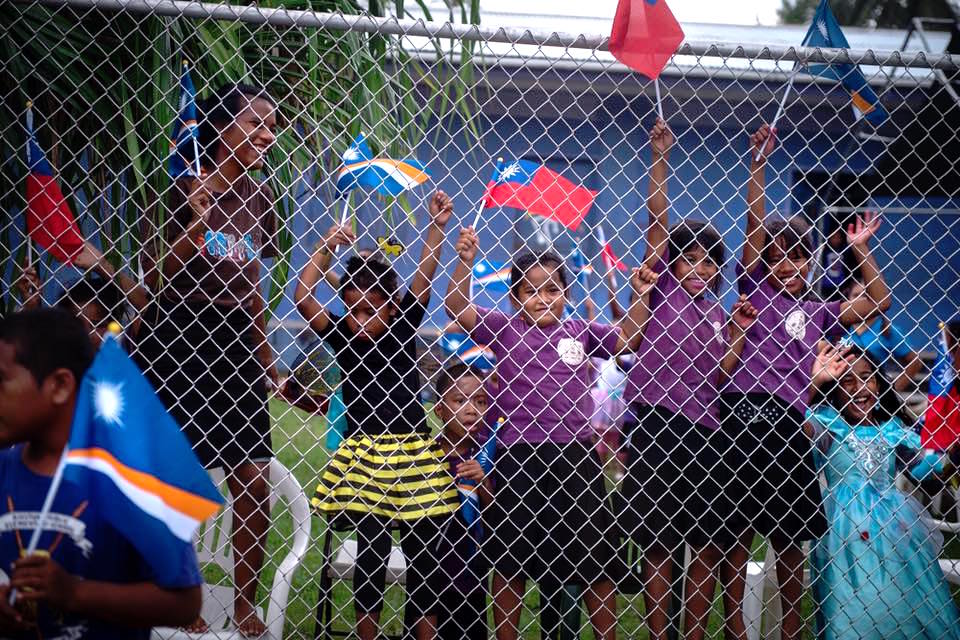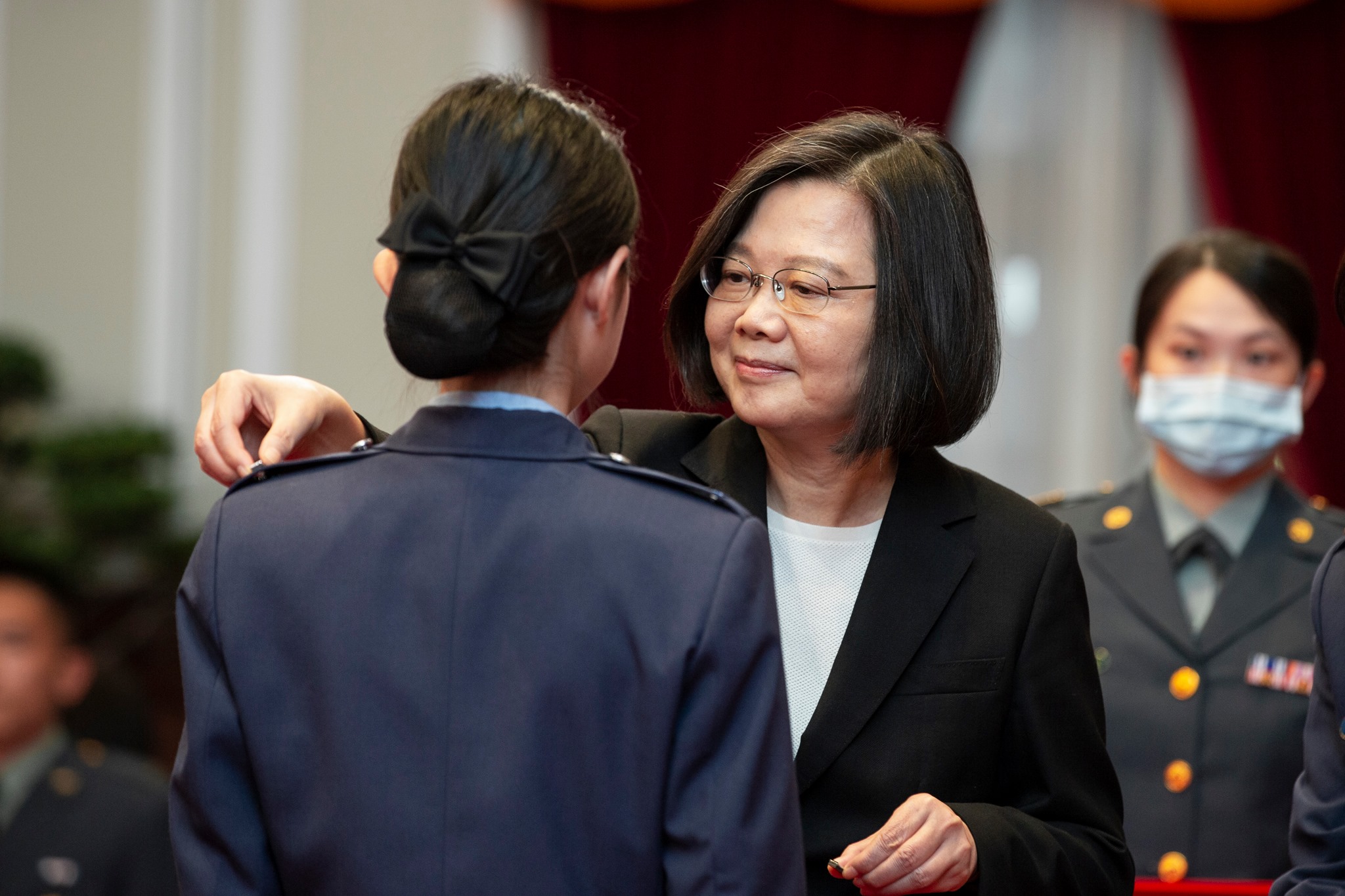It’s unlikely that Taipei’s diplomatic partners will abandon Taiwan en masse in 2018. Still, Taiwan must continue to deepen its political, economic and cultural ties with various countries in ways that China cannot easily uproot.
With the current status of cross-Strait relations, will more countries break diplomatic relations with Taiwan in 2018? Left with only 20 countries extending formal diplomatic relations, Taiwan finds itself in need of a creative response to Chinese efforts to limit Taiwan’s international space.
Conventional wisdom had it that the informal diplomatic “truce” started under the Ma Ying-jeou administration in 2008 would collapse with the Kuomintang’s (KMT) loss of the presidency to the Democratic Progressive Party’s (DPP) Tsai Ing-wen in 2016. Since then, Taiwan has lost two diplomatic partners: Sao Tome and Principe in December 2016, with five hours’ notice, after Taipei’s rejection of a multimillion-dollar aid package to the African country, and Panama in June 2017 following increased Chinese aid and investment (see here, here, and here). China recognized a third country in 2016, the Gambia, that had unilaterally broken relations with Taiwan in 2013; however, Beijing waited to extend diplomatic recognition until Tsai’s victory, then provided the country with US$50 million for an international conference center. Concerns that the Holy See (Vatican) may switch recognition later this year also have reemerged as the Vatican appears to have dropped its opposition to the appointment of Beijing-approved bishops.
Tug of war
An initial reaction by the Tsai administration to the loss of additional countries that officially recognize Taiwan might be to attempt to woo countries away from China. While historically, Taiwanese administrations did not have to look for very long to find a subset of countries more than willing to engage in “dollar diplomacy” and grant diplomatic recognition to the highest bidder, the number of countries willing to forego relations with China is likely to decrease as a function of China’s growing economic and political clout. The two countries that switched multiple times before the diplomatic truce — the Central African Republic and Liberia — have both witnessed increased economic dependence on China in the past decade, making another switch unlikely. Even if a few countries are still willing to switch from recognizing China, a Taiwan willing to engage in “dollar diplomacy” again implicitly acknowledges that it relinquishes power to states that may have little long-term interest in Taiwan’s political and economic goals. This may also be risky as a country could be swayed to switch recognition to Taiwan out of short-term necessity, as seen in the case of Papua New Guinea in 1999, where prime minister Bill Skate declared his intent to switch recognition to Taiwan, only to resign less than a week later after a domestic backlash and see recognition of China restored.
Additionally, increased Taiwanese investment in a country does not guarantee that a country will maintain relations with Taiwan, as was noted in 2007 with Costa Rica. Furthermore, previous findings suggest that as a country’s exports as a percentage of GDP per capita increases, they are more likely to recognize China over Taiwan and thus, even well-intentioned aid and investment packages to incentivize export-oriented growth may undermine Taiwan’s diplomatic goals.
Taiwan is also unlikely to lose all its diplomatic partners, despite concerns especially after the loss of Panama (see “The World Is Deserting Taiwan” and “Who Will Abandon Taiwan Next?”). For example, directly following the loss of Panama, Taiwan appeared to commit more aid to Guatemala and Belize, assuaging worries that holdouts would leave en masse (see here and here). Much as Taiwan reallocated funding following Panama’s switch, it also did so after Costa Rica switched diplomatic recognition in 2007. Taiwan’s increased aid package to the Dominican Republic following Costa Rica’s switch allowed Taiwan to strengthen recognition and discourage another state in the region from switching. If another country were to switch recognition in 2018, it is feasible that Taiwan could implement this strategy once more, earmarking and reallocating money to bolster Taiwan’s ties and prevent another country’s switch.

Children wave flags of the Marshall Islands and the Republic of China during an official state visit by President Tsai Ing-wen in October 2017 (Photo courtesy of the Tsai Ing-wen official Facebook page).
Furthermore, Taiwan’s involvement in regional organizations, especially in Central America, helps it maintain its relevance in the region. Despite the loss of Panama last year and the loss of Costa Rica in 2007, Taiwan remains embedded in organizations such as Sistema de Integración Centroamericano (see here and here) to the Banco Centroamericana de Integración Económica and is a permanent observer at the Parlamento Centroamericano. Taiwan’s position and funding of many of these institutions gives further incentives for the five remaining Central American countries to remain diplomatic partners with Taiwan.
It is possible that Taiwan could implement a strategy similar to that of Latin America in Oceania in order to strengthen ties with pacific countries through increased involvement in regional organizations. Taiwan currently contributes to the Smaller Island States (SIS), the Council of Regional Organizations of the Pacific (CROP), and the Pacific Island Forum Secretariat, among others (see here and here.) Though Nauru briefly switched recognition to China (2002-2005), it returned to Taiwan after claiming that Chinese assistance pledges were unfulfilled. Several countries in the Pacific seem content with Taiwan. Palau, long concerned about the ramifications of recognizing Beijing, has stayed with Taiwan even after Beijing threatened to ban Chinese tour groups in 2017, comprising nearly half of the total tourists, from the island.
The Holy See experienced a similar mandate from China in November 2017, which required that tour agencies remove the Vatican as a tour destination in from all “promotional literature and other products.” Many speculated that this was an attempt to lure the Holy See, Taiwan’s only diplomatic partner in Europe, to recognize China. Despite this mandate and the waning influence of Cold War ideologies, the Vatican has remained steadfast in its recognition of Taiwan.
Finally, Taiwan’s two remaining diplomatic partners in Africa — Swaziland and Burkina Faso — maintain that their relations with Taiwan are “concrete,” even after the Gambia switched recognition in 2016. In January 2017, Burkina Faso rejected a Chinese aid offer of US$50 billion to continue its partnership with Taiwan.
What’s an ally?
Under the Chen Shui-bian administration (2000-2008), six countries dropped their diplomatic recognition of Taiwan in part due to its inability to make available aid packages comparable to what China would offer, negating most of the expansion under Lee Teng-hui. Meanwhile, the Tsai administration has been adamant that aid packages to countries recognizing Taiwan were not a form of “dollar diplomacy.” However, Joel Atkinson notes that most of Taiwan’s diplomatic allies today are the same as in 1989. The question thus becomes whether holding on to all of the remaining 20 relations is crucial. Others, including the KMT’s Jason Hsu suggest focusing only on diplomatic relations that are vital to Taiwan, although how to measure which ones are vital remains unclear. None of Taiwan’s diplomatic partners serve as a deterrent to Chinese aggression. Nine (including the Holy See) do not have a military. Furthermore, several that do have militaries, including Burkina Faso and the majority of Central American allies, rely on Taiwanese military investment, training and even donations of weaponry and aircraft. Furthermore, though Taiwan’s diplomatic partners have petitioned for the country’s inclusion in the United Nations in the past, as of 2017 all applications for inclusion were “dead.” Additionally, this limits Taiwan’s observer status in UN-affiliated organizations, such as the World Health Assembly and the UN climate control convention. However, inactivity as China pursues formal recognition of these holdouts risks signaling that China can more aggressively pursue steps to limit Taiwan’s activities, including perhaps unofficial relations.
Few other countries would suggest that simply receiving diplomatic recognition by another country makes that country an ally in a meaningful way other than that both accept the other’s right to exist.
Taiwan should also reconsider how it phrases diplomatic relations. Painting formal diplomatic relations as “diplomatic allies,” a common practice by the Ministry of Foreign Affairs as well as both Taiwanese and Western media (see here, here and here), does little to help Taiwan’s cause as it overestimates the substantive relations with many of these countries and perpetuates a victim narrative when these countries shift recognition to Beijing. Xueying Li, for example, suggests that the image of these countries as “allies” is a “Taiwanese delusion.” This unfortunate phraseology is evident in academic work as well. A cursory Google Scholar search on Jan. 10 finds 540 hits for “diplomatic allies” that also included Taiwan, versus only 175 that did not.
Few other countries would suggest that simply receiving diplomatic recognition by another country makes that country an ally in a meaningful way other than that both accept the other’s right to exist. The U.S. did not use such phraseology when extending relations to regimes such as the Soviet Union in 1933. Nor does the act of diplomatic recognition require substantive relations or even the establishment of a physical presence in the other’s country (e.g. an embassy). Taiwan may wish to continue to frame relations in terms of democracy promotion as, excluding the Holy See (Vatican), all but Swaziland are labeled “Free” or “Partially Free” by Freedom House. The Taiwanese experience of democratization in the face of less than favorable geopolitical conditions, including an existential threat next door, should appeal to countries facing internal and external challenges. However, the “ally” narrative only serves to emphasize Taiwan’s precarious diplomatic position each time a so-called “ally” leaves.
Several options remain to prevent Taiwan’s international isolation, from expanding or creating new regional organizations in Oceania and Central America to addressing concerns of recognizing countries in the Caribbean to focusing on informal relations that buttress formal ties. City-to-city economic agreements and cultural exchanges not only build the foundations for substantive relations later but also, at the present, generate less backlash from Beijing.
During 2018, Taiwan’s diplomatic partners are unlikely to desert en masse. Ultimately, however, even if one country chooses to switch diplomatic recognition to China, Taiwan can reallocate previously earmarked resources to discourage others from a similar switch. For long-term success, such efforts need to be partnered with additional means to deepen political, economic and cultural ties with Taiwan in ways that China cannot easily uproot.
Top photo courtesy of the Tsai Ing-wen official Facebook page.
You might also like
More from Cross-Strait
The Making of ‘Insidious Power: How China Undermines Global Democracy’
A new book released on July 30 takes a close look at the agencies and mechanisms of CCP 'sharp power' …
President Tsai’s Second Term and Cross-Strait Relations: What to Watch Out For
The next four years will be marked by uncertainty over China’s trajectory and the state of the world in the …
As Coronavirus Crisis Intensifies, Beijing Continues to Play Politics Over Taiwan
With a major epidemic on its hands, the Chinese government has not ceased its political warfare activities against Taiwan. It …









